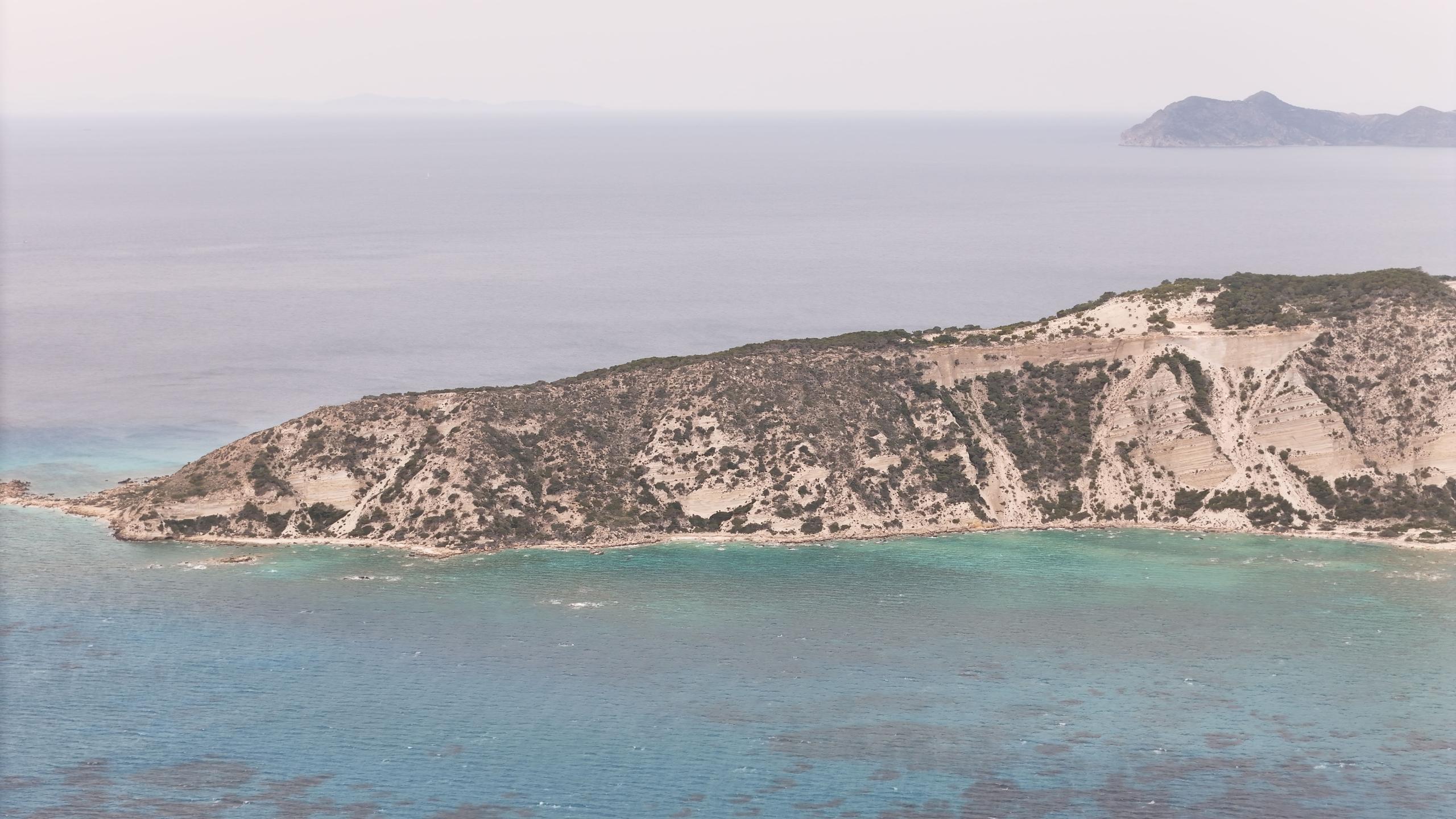
Gyali is the youngest volcanic center in the area.
The southwest slope of Gyali (Site 11.1) mainly consists of deposits from the Lower Kisseris, an underwater kissen cone formed about 50,000 years ago. The quality of this kissen is very high,which is why it has been intensively mined for the past 50 years. Above this kissen is a marine terrace with numerous fossils. It is covered by the deposits of the Upper Kissen of Gyali, a major eruption that occurred 31,000 years ago, also found in Nisyros. Above this are older terrains that host obsidian artifacts ranging from the Neolithic to Byzantine periods.
This entire area has experienced rapid uplift due to magma intrusions, which have raised the marine terrace to a height of 160 meters. The only part of the area that was not uplifted is the one located at the isthmus of the island.The northeast slope (Site 11.2) is primarily built of obsidian-perlitic domes and thick lava flows, aged 24,000 years. At its north eastern edge, the Kamara area, a segment of a tuff ring with spectacular cross-layered structures of fine ash and traces of volcanic bombs can be seen, documenting that the source of the eruption was several hundred meters northeast of the current land. In the bay of Gyali, the islet of St. Anthony is encountered, composed of andesiticlavas. Strogili (Site 11.3) is a typical andesitic stratovolcano. Its base is about 600 meters below sealevel and its summit is at 120 meters. Above the andesitic lavas is the deposit of the Upper Kissen of Gyali.
At the summit, there is a typical central crater. The island was inhabited in the past, and today a part of a watchtower is preserved. Pyrgousa is built from old dacitic lavas, similar to those found in southwest Kos (Site 11.4).These lavas are covered in the southern part by the ash from the massive eruption of the Upper Tuff of Kos, which occurred 161,000 years ago (Site 11.5).
This ash is covered with thin ash layers from the eruptions of Kyra. On Pyrgousa, remnants of two watchtowers from the classical-Hellenistic period are preserved. Pachia (Site 11.6) is also built from the same lavas as Pyrgousa. In the northeast part, the lava sare covered by the ash of the Upper Pyribrite of Kos, as well as ash horizons from Kyra (Site11.7).

